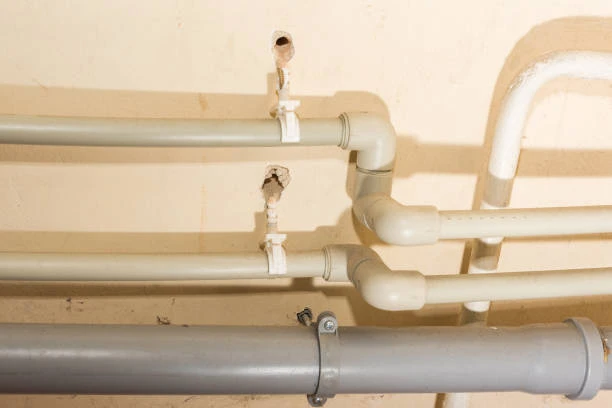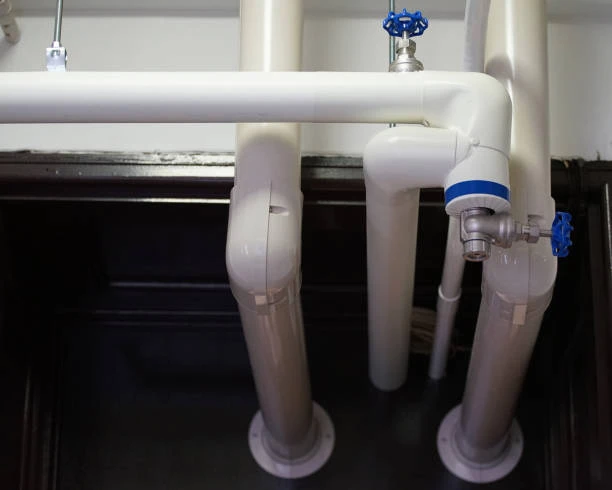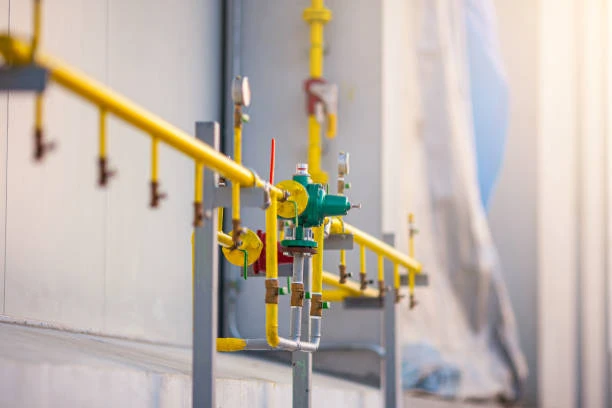1. Introduction to CPVC and PPR Pipes
CPVC and PPR pipes dominate the hot water supply market. CPVC, or chlorinated polyvinyl chloride, excels in heat resistance and durability. PPR, or polypropylene random copolymer, offers flexibility but struggles with high-temperature applications. Comparing CPVC versus PPR shows CPVC performing better in long-term hot water systems. For instance, CPVC handles temperatures up to 93°C, while PPR softens above 70°C, making it less reliable.
2. Temperature Tolerance in Hot Water Systems
Hot water systems require pipes that can handle high temperatures without deformation. CPVC outperforms PPR in this regard. CPVC maintains structural integrity up to 93°C, making it ideal for consistent hot water flow. PPR pipes, in contrast, tend to warp or weaken at temperatures above 70°C. For example, hotels using CPVC pipes report fewer failures in their heating systems compared to PPR installations. Comparing CPVC versus PPR highlights CPVC’s superior temperature tolerance.
3. Durability and Lifespan
CPVC pipes offer exceptional durability, lasting decades in hot water systems. Their resistance to scaling and corrosion ensures long service life. PPR pipes, while resistant to some chemicals, degrade faster under constant exposure to heat. For instance, residential complexes using CPVC avoid frequent replacements common with PPR pipes. When comparing CPVC versus PPR, CPVC consistently provides a longer and more reliable lifespan.
4. Installation and Maintenance Efficiency
CPVC pipes simplify installation with solvent welding, reducing time and labor costs. PPR pipes require heat fusion, which needs specialized tools and trained technicians. Maintenance is easier with CPVC due to its resistance to scaling and mineral buildup. For example, in high-rise buildings, CPVC pipes ensure efficient maintenance and lower costs. Comparing CPVC versus PPR, CPVC proves more convenient and cost-effective for installation and upkeep.
5. Chemical Resistance and Water Quality
CPVC pipes resist chlorine and other chemicals used in water treatment processes. This helps maintain water quality and prevents pipe degradation. PPR pipes, although resistant to some chemicals, absorb odors and impurities over time. For instance, CPVC ensures safe drinking water in hospitals and schools. Comparing CPVC versus PPR, CPVC guarantees better chemical resistance and water purity, crucial for sensitive environments.
6. Energy Efficiency in Heat Retention
CPVC pipes reduce energy loss by maintaining water temperature during transport. Their smooth interior surface minimizes friction, improving flow efficiency. PPR pipes, while insulating, lose more heat in long-distance supply systems. For example, CPVC delivers hot water more efficiently in large industrial facilities. Comparing CPVC versus PPR, CPVC enhances energy efficiency and lowers operational costs, making it the preferred choice.
7. Cost-Effectiveness Over Time
Although CPVC pipes may cost more upfront, their long lifespan and low maintenance needs make them more economical. PPR pipes require frequent repairs and replacements, increasing long-term expenses. For instance, CPVC hot water systems in commercial buildings save thousands of dollars over the years. Comparing CPVC versus PPR highlights CPVC’s better value for money in terms of lifecycle costs and reliability.
8. Environmental Sustainability
CPVC pipes contribute to sustainability by reducing material waste and energy consumption. Their long lifespan minimizes the need for replacements. PPR pipes, while recyclable, often require more resources due to shorter service life. For instance, eco-conscious industries prefer CPVC to support their sustainability goals. Comparing CPVC versus PPR, CPVC demonstrates a lower environmental footprint, aligning with modern sustainability practices.
Conclusion
CPVC pipes provide unmatched benefits for hot water supply systems. Their superior temperature tolerance, durability, and efficiency make them a reliable choice. When comparing CPVC versus PPR, CPVC consistently outshines in performance, cost-effectiveness, and sustainability. Industries and homeowners looking for long-term solutions can rely on CPVC for their hot water supply needs.
IFAN Products international standards
IFAN products strictly adhere to a comprehensive range of international standards, encompassing ISO 15874, EN 15874, ASTM F2389, DIN 8077/8078, GB/T 18742, NBR 15884, ISO 15494, EN ISO 15494, GB/T 19472, NBR 15494, ASTM 2846 (501), DIN 8079/8080 (502), ASTM F441/F441M SCH80 (503), DIN (504), DIN (505), GB/T 18993, AS/NZS 1477, CSA B137.6, NSF/ANSI 14, TIS 17-2532/1131-2535, BS 3505, BS 4346 (801), ASTM D1785 SCH40 (802), ASTM D1785 SCH80 (803), DIN (804), GB (805), GB (806), GB(901), DWV(902), ASTM D2665 (903), along with ASTM D2241, D2665, D2729, and F441/F441M series, ISO 1452, EN ISO 1452, DIN 8061/8062, GB/T 10002, AS/NZS 1477, JIS K6741, CSA B137.3, and other national and industry norms.
Connect
IFAN is a Chinese manufacturer of plastic pipes, fittings and valves with 30 years of experience. If you are interest in IFAN copper fittings, copper valves, plastic pipes and fittings, please contact us. IFAN offers you a variety of standard pipes to meet your specific needs. Click below to learn more about IFAN’s wide range of affordable and cost-effective valve products and piping system related products.
We will reply your email or fax within 24 hours.
You can call us at any time if there is any question on our production.
For more information,pls visit our webside https://waterpipefitting.com/
Pls Mailto: [email protected]
Whatsapp: + 86 19857948982














Recent Comments